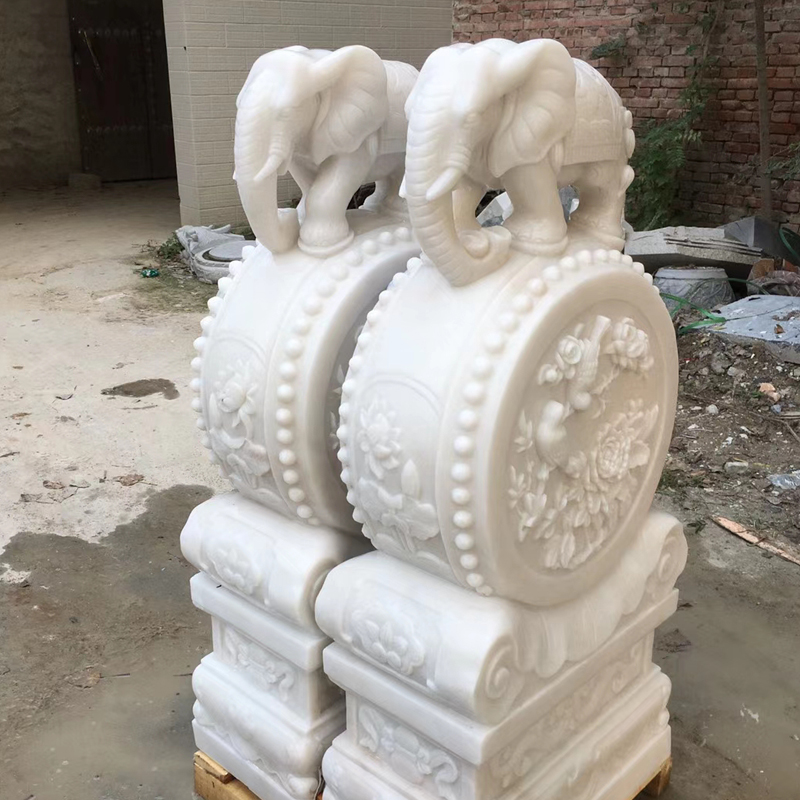It is not easy to make a good Landscape Stone, and there have been some regrettable works that have affected the reputation of the Landscape Stone to a certain extent. High-quality completed Landscape Stone works must skillfully combine all aspects of production. Round sculpture is the most difficult, but mastering the production method of round sculpture can naturally produce relief sculptures.

1. Design and build models
Landscape Stone design should consider material and process characteristics. Landscape Stone are easy to shape into beautiful streamlined products, highlighting the contemporary feel of the work. Arc streamlined shapes can be used in the design. Because Landscape Stone are lightweight and high-strength, they can produce works with strong dynamic support and small supporting areas. Sometimes it is necessary to paint the surface afterwards. The gel coat has leveling properties and has a certain leveling effect under the action of tension during curing, so it is not suitable for expressing fine textures. These should be carefully considered during design. The original mold can be made of clay. After the
stone carving model is completed and dried naturally, the Landscape Stone mold can be made.
2. Production of Landscape Stone
Made using hand lay-up method. According to the shape and characteristics of the stone sculpture, and from the perspective of facilitating molding and demoulding, the mold is broken down into several units for reproduction. Shape them accordingly and combine them into a whole. Finally, the whole piece is processed and painted, and a Landscape Stone work is completed.
3. Mold making
Mold making is the key to molding. Gypsum is often used to make molds, but gypsum has low strength and is prone to deformation over time. Molds can be made from silicone rubber and Landscape Stone materials. Silicone rubber is in a fluid state before use and has good flow and filling properties. The elastomer is formed after cross-linking reaction and has large elastic deformation. The water in the original mold has no effect on the cross-linking reaction. After cross-linking, the silicone rubber has good sealing properties and does not bond with the original Landscape Stone. Used as the surface layer of Landscape Stone molds, it can reproduce the shape of the work with high quality and can be demoulded smoothly. However, the cross-linked body is easily deformed and needs a supporting carrier. The easy-to-form characteristics of Landscape Stone are used as the carrier of the mold.
4. Mold making method
Prepare the silicone rubber and apply it on the original mold in batches until the silicone rubber layer is 1mm or above. After the silicone rubber is cross-linked, a Landscape Stone layer of about 3mm is formed on the silicone rubber. After curing, cut the mold along the divided unit blocks, and be careful to cut the silicone rubber layer of the Landscape Stone layer at the same time. Connecting ribs are made between the unit blocks and slots are set at the connecting ribs to ensure that the connecting ribs make the unit block molds into a whole. After the work is completed, demould the unit block of the Landscape Stone, then take off the silicone rubber layer, and immediately put the removed silicone rubber back into the unit mold of the Landscape Stone.
5. Molding production method
Using hand lay-up molding method, design ideas before production. Start by assembling a portion of the paste product from one end. After a part of it is cured, the mold is assembled and the paste is continued. Combine as many unit blocks as possible at one time. Finally, one unit block is left, which is preformed and then glued to the overall stone sculpture. The difficult-to-make parts of stone sculpture, such as the corners, legs, and tails of animals, can be roughly shaped with corresponding metal materials, and then Landscape Stone can be shaped on the materials and polished to trim them. The shapes of stone sculpture are relatively complex and should be treated specially. Places where glass is difficult to lay should be filled with resin first, and then fiberglass and square cloth should be laid. The length of the resin putty used for the surface layer is preferably 10 mm. During molding and production, the metal skeleton is buried in the stone sculpture. Improve the stiffness and strength of the stone sculpture, increase its service life, and finally install it with a metal skeleton.
6. Post-processing methods
On the one hand, post-processing is to repair local defects of the product and mainly to create surface effects. Commonly used surfaces are imitation copper and imitation bronze. The stone sculpture made of Landscape Stone have bright colors, beautiful lines and beautiful shapes. It can be made into a variety of imitation gold, copper, and stone effects to express a distinct sense of the times. Good Landscape Stone works must take into account design, modeling, molding, and processing to ensure that the quality of each link is achieved.



